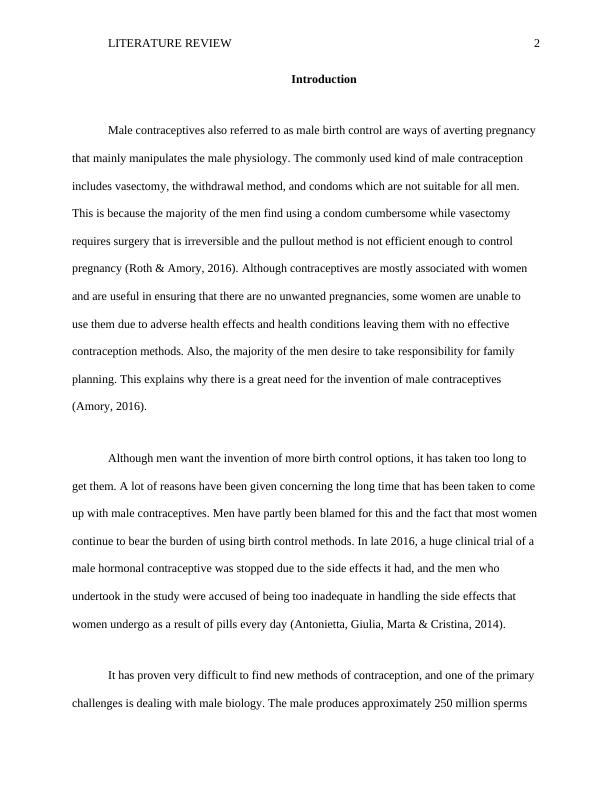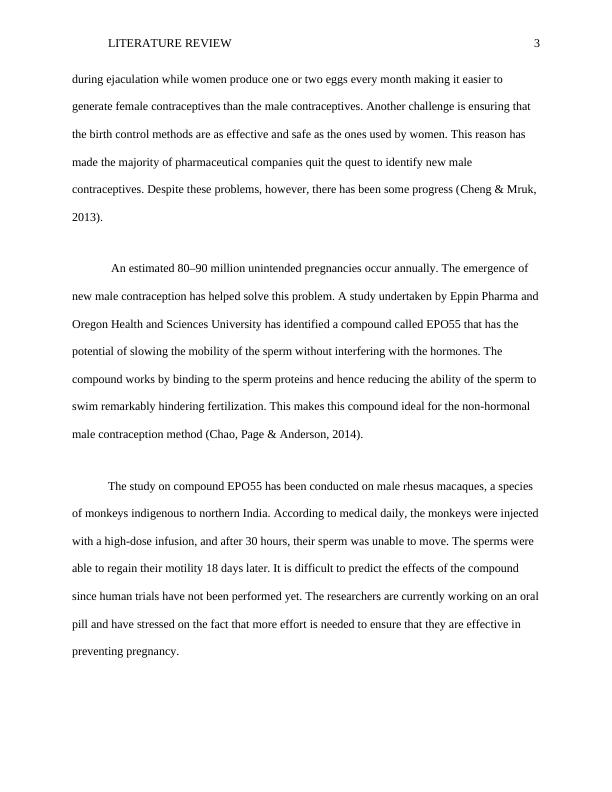Male Contraception: A Review of Current Methods and Developments
13 Pages3625 Words389 Views
Added on 2023-06-07
About This Document
This literature review explores the current methods and developments in male contraception. It discusses the challenges of developing male birth control and potential side effects. The review covers various methods such as vasectomy, condoms, and non-hormonal options like EPO55 and Gossypol. It also discusses the potential of immunocontraception and the combination of Depo-Provera injections and testosterone gel. The subject is male contraception, and the course code and college/university are not mentioned.
Male Contraception: A Review of Current Methods and Developments
Added on 2023-06-07
ShareRelated Documents
End of preview
Want to access all the pages? Upload your documents or become a member.
Different Methods of Contraception and Their Advantages and Disadvantages
|2
|1140
|335
Contraceptive Methods: Types, Effectiveness, and Usage
|1
|541
|92
Contraception Methods for Allie: A Comprehensive Guide
|8
|2989
|83
Research on Additional Area of Reproduction Essay
|7
|1591
|35
Effects of Birth Control Methods on Birth Rate and Maternal Health
|9
|2275
|72
Women's Health Education: Practices, Laws, and Effects on Health
|6
|1417
|129




